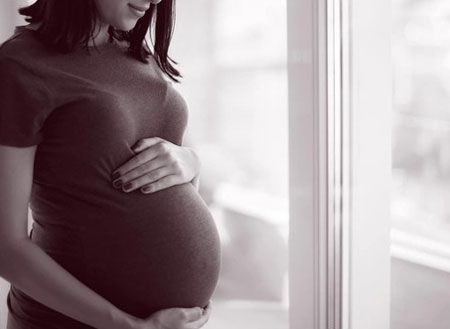Expecting mothers deal with a wide variety of symptoms over the nine months of pregnancy. Though most of those symptoms are addressed by the attending OB-GYN, some are better handled by your favorite orthopaedic specialists at Orthopaedic Associates of Wisconsin!
In general pregnant females can play host to a myriad of musculoskeletal problems due to the biological changes that occur during gestation. Increased levels of progesterone as well as the production of relaxin can cause ligamentous laxity that can be a precursor to injury. The laxity coupled with an altered sense of balance and center of gravity lead obstetricians to recommend lifting restrictions and exercise precautions to protect women against musculoskeletal injury during their pregnancy. No pregnant mother wants to deal with an ACL tear while also carrying a child in her womb!
One of the most common orthopaedic symptoms expecting mothers endure is carpal tunnel syndrome. It is typically a third trimester issue that is thought to be caused by the increase in both weight and fluid retention, which can put pressure on the carpal tunnel and cause numbness and tingling in the hand, lack of dexterity, and general discomfort. Treating carpal tunnel syndrome in the pregnant population doesn’t differ all that much from treating it in those non-expecting folks. However, surgical intervention isn’t going to be recommended as the symptoms (like all symptoms related to gestation) are temporary and will resolve after child birth. For some unlucky moms, symptoms persist after pregnancy whether due to persistent fluid retention and weight gain or the repetitive actions of caring for a newborn (carrying, changing diapers, etc.). Stubborn, intolerable symptoms can be treated with splinting to keep the wrist in a neutral position, cortisone injections, and avoidance of aggravating activity.
Another joy of pregnancy that lots of women experience is low back pain. As weight gain progresses and stresses the already lax ligaments of the spine, general discomfort in the lumbar region of the spine seems like an obvious and unavoidable problem, especially for women whose bodies are not accustomed to excess weight in their midsection. As baby grows in the uterus, general posture is often compromised; thus, stressing the structures supporting the low back and causing pain. An altered gait pattern (the pregnant waddle) can also stress the joints of the low back and pelvis and worsen discomfort.
A growing baby putting undue stress on the nerves stemming from the low back can also wreak havoc on the lower body. All is not lost! Oftentimes these symptoms can be mitigated by diligent efforts at performing regular yoga and stretches, adjusting physical activity habits, and focusing on keeping the core strong throughout pregnancy to support your posture. Ice and heat applications, massage, and foam rolling can also alleviate symptoms. Being conscious of weight gain and not increasing your body mass outside what is recommended by your physician can also help combat the symptoms. Sometimes a course of formal physical therapy can be beneficial for more severe pain. Pregnancy is no easy task for any expecting mother. If you develop any of these symptoms, you should always consult with your OB-GYN first. If we can provide any additional assistance to help alleviate some of the struggle before you greet your little one, give us a call!

